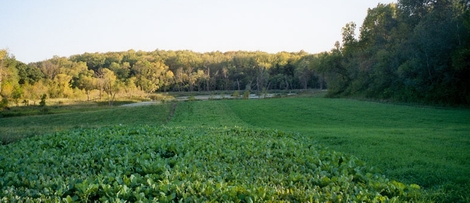
Unless you are a wheat farmer, every landowner or hunter wants to see more wild turkey on their property. The best way to ensure that turkeys flourish on your property is to create high-quality habitat that provides adequate food and cover requirements. A great way to attract and hold turkeys on your land is to clear and maintain wildlife food plots. Creating and retaining forest openings should be an important component of any turkey management program. If your property is comprised of dense woodlands, then first you must create openings within the forested area for plots to be planted.
Forest openings will allow your turkey food plot to receive adequate amounts of sunlight, thrive, and provide supplemental food for your turkey population. Food plots are a good idea because they attract deer and turkey, but more importantly these plots provide supplemental food for game and other species of wildlife. Establishing and maintaining turkey plots can be expensive and, of course, requires some knowledge of planting and the skill in the proper use of farm equipment. Before jumping into a food plot, make sure you take the time to identify the forage species that is best suited for your area.
This is necessary to ensure that your food plot yields the highest results possible. Even with that said, one of the most often overlooked factors of food plots is soil testing and proper seedbed preparation. In addition, make sure that planting depth and nutrient requirements are met. The size of the seed to be planted and soil moisture conditions are two primary considerations before planting your turkey plot. Seedbeds for small-seeded plants such as clovers need to be as smooth and clean as possible. On the other hand, large-seed plants like corn, peas, and beans do not require as neat a seedbed. These robust seeds can literally plow right through the soil and around clods to get sunlight. Continue reading Creating Food for Turkey Using Food Plots